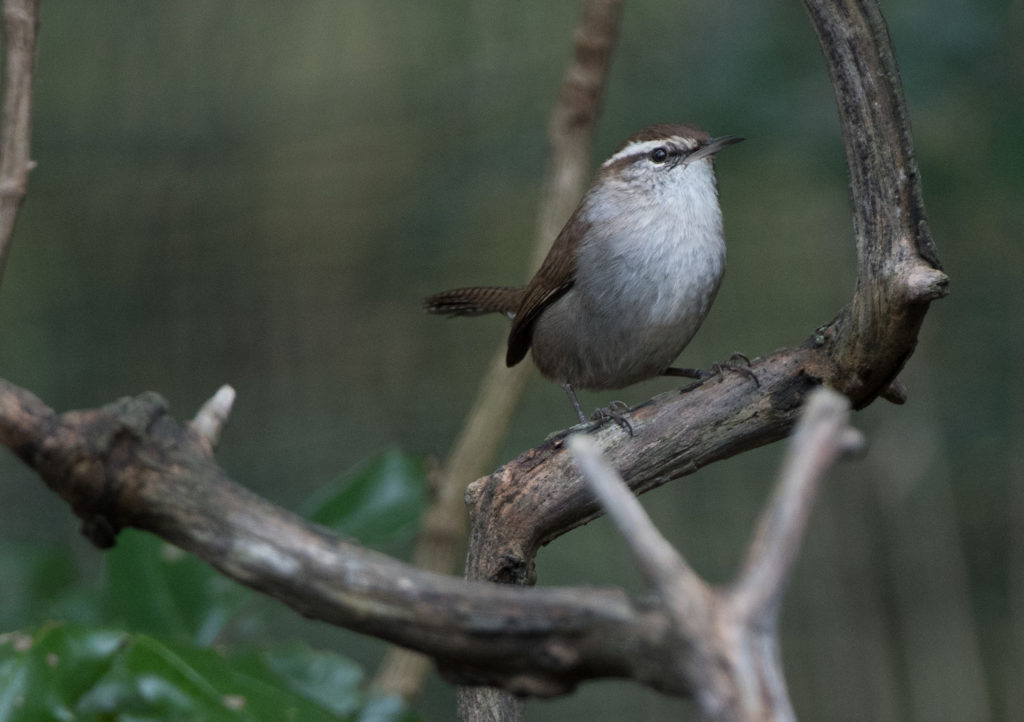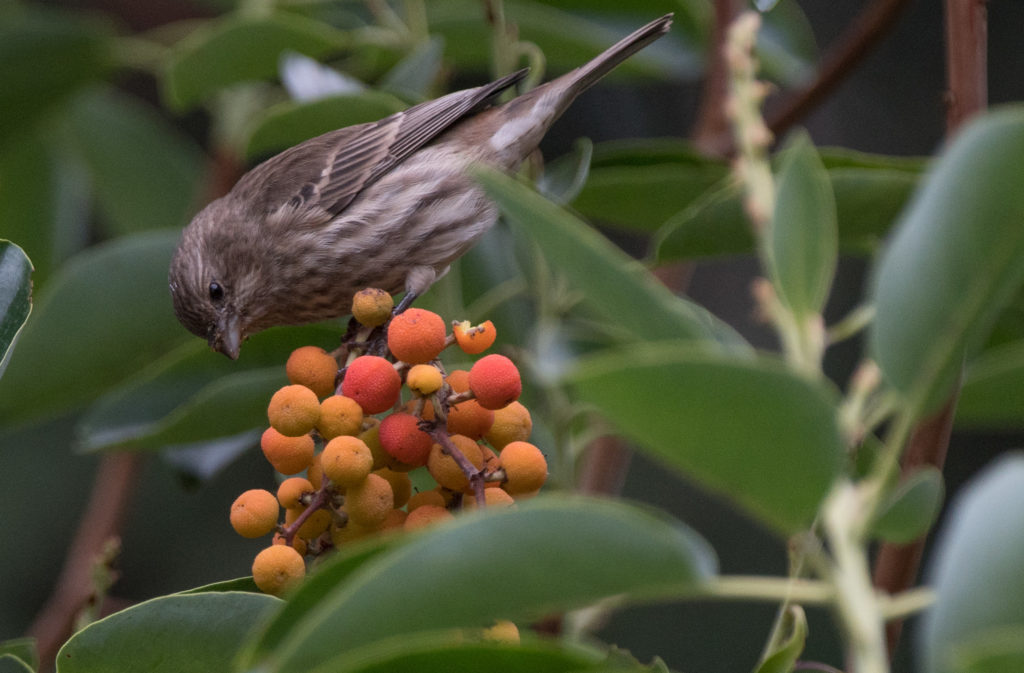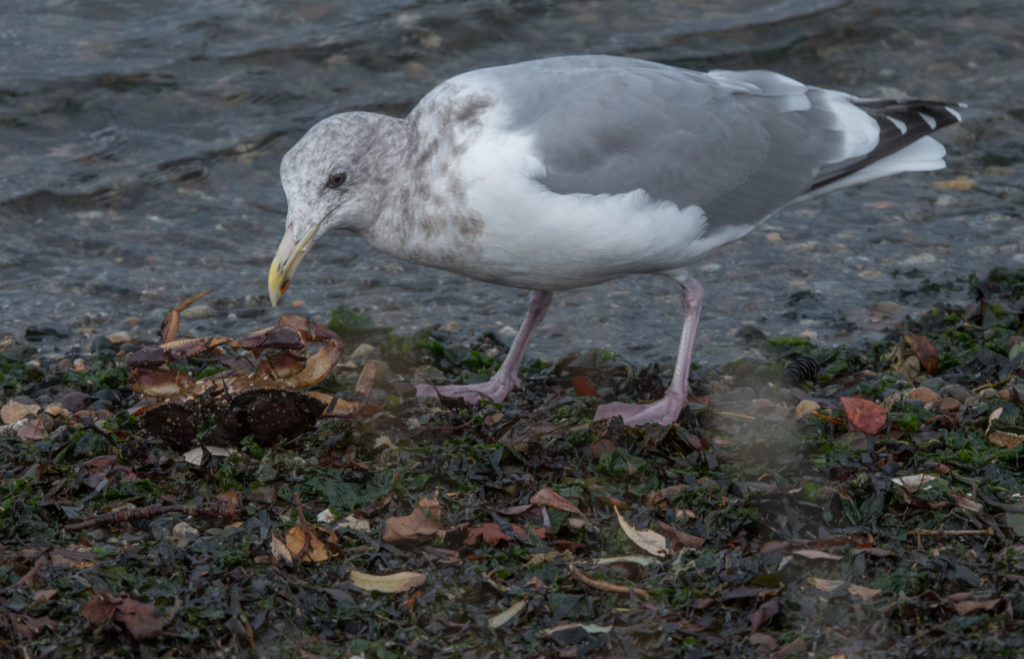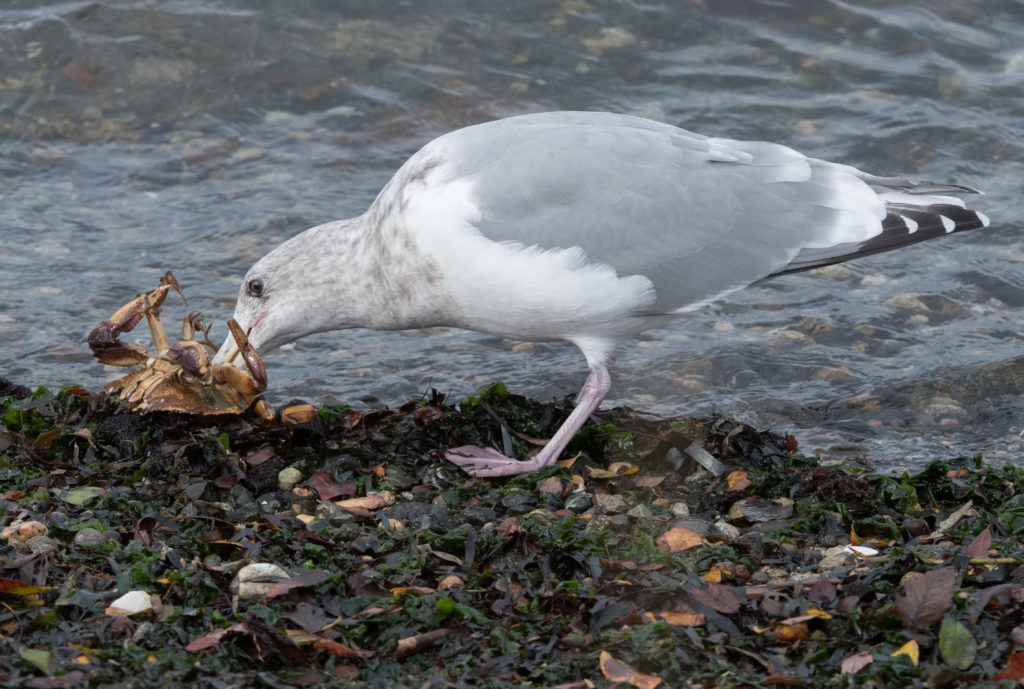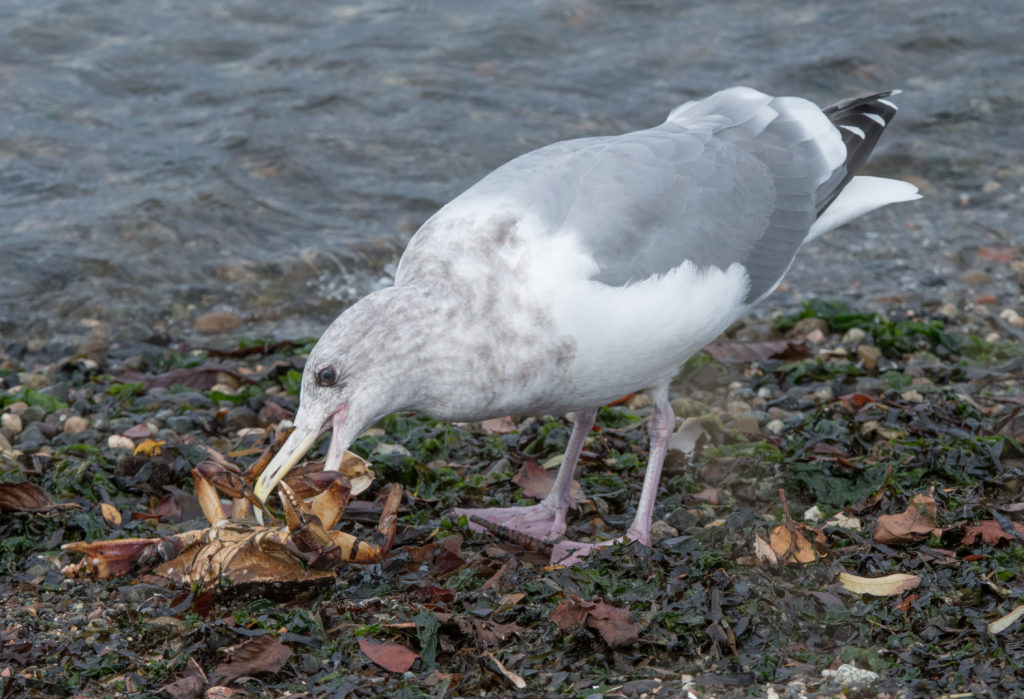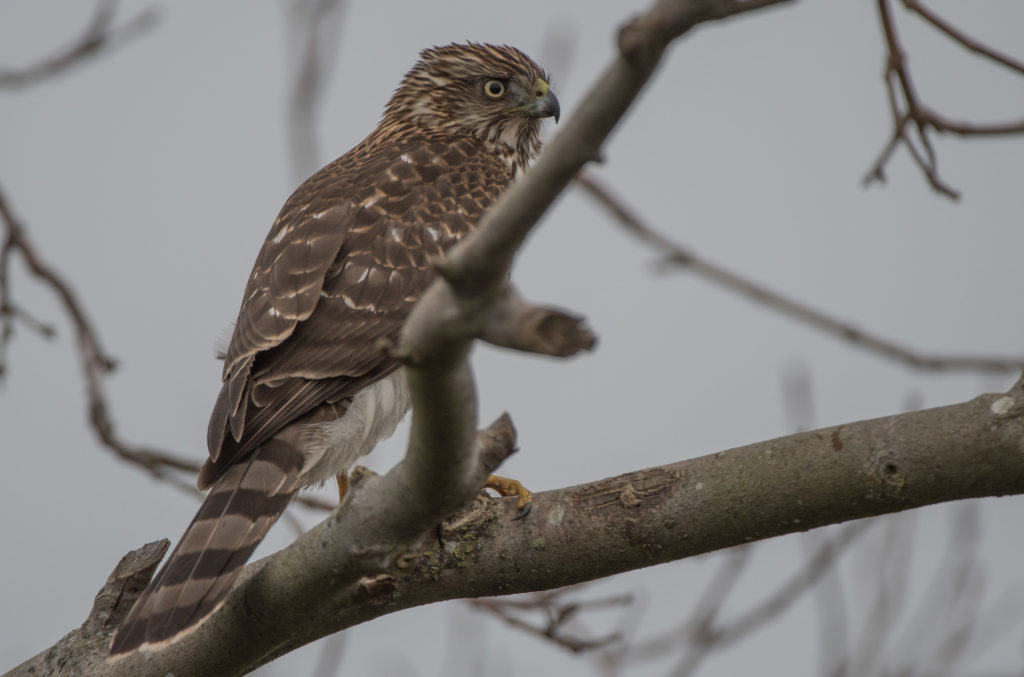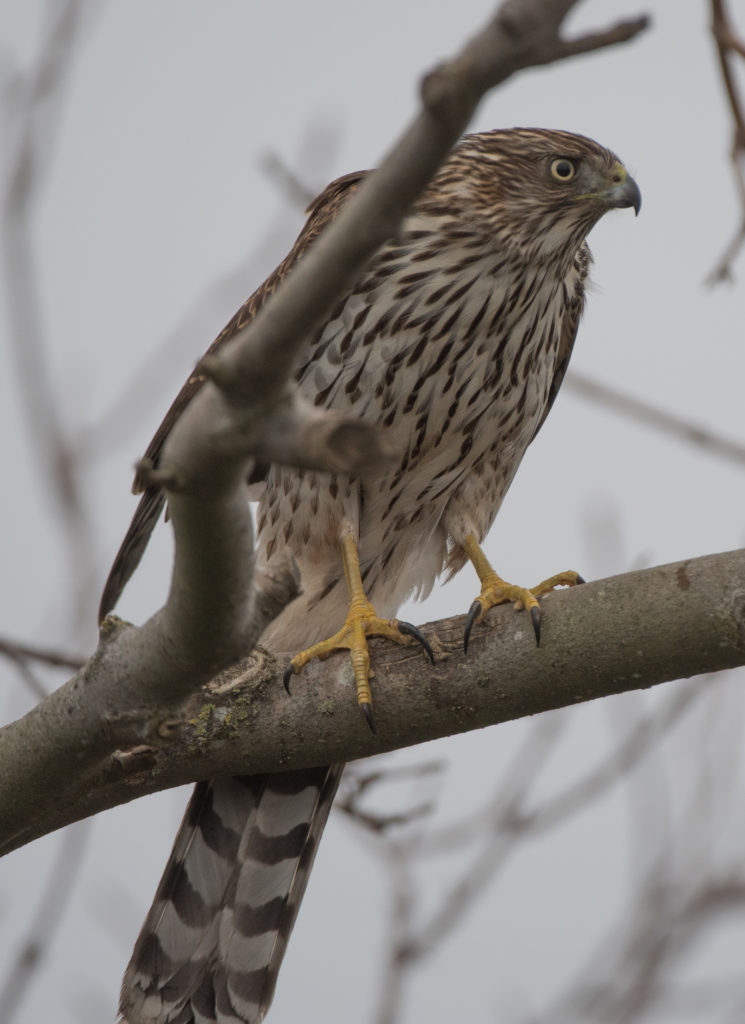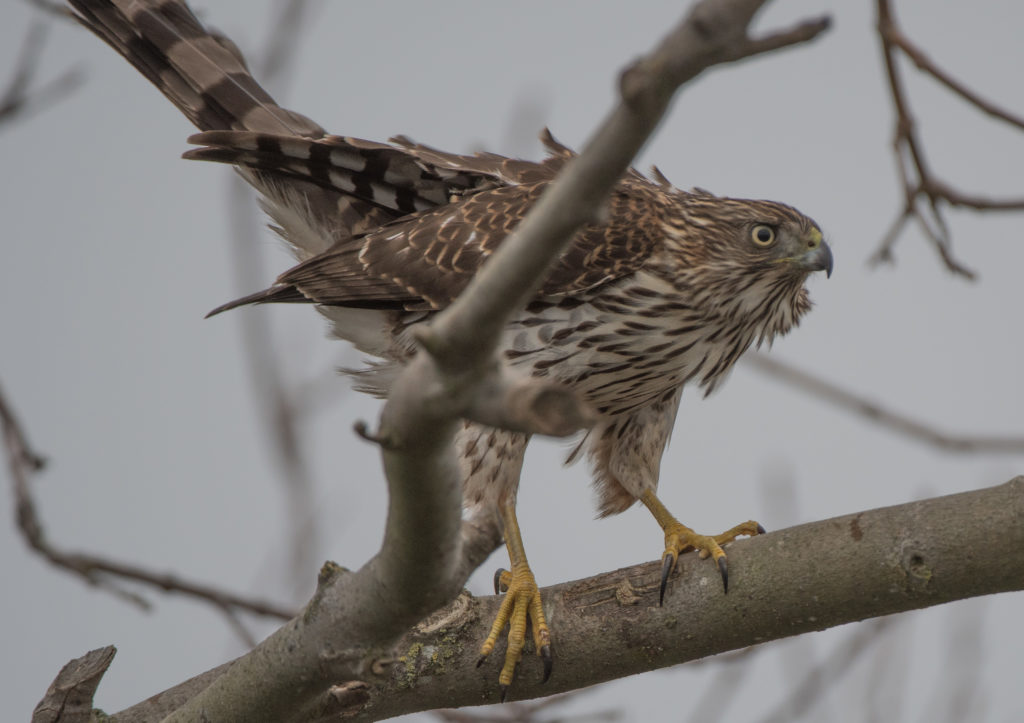It’s been a while since I last posted. My wife and I traveled to New Mexico for a little birding at the end of October, but that’s a tale I’ll embellish in my next blog post. Most of the photos appearing in this post were taken last month with the exception of the last bird below.
This is a not-so-great photo of a Bewick’s wren in our yard. I included it because our habitat is not that welcoming to wrens and they are fairly rare visitors. So you might refer to this as an ‘appearance’ photograph… and I am appreciative for the visit!
We had a bumper crop of madrone berries this year, both in and out of the yard. There’s a theory that when trees are stressed they might sense that they are in danger and to insure the survival of the species they produce extra seeds, in this case in the form of fruit. The drought we had this summer definitely stressed the madrones, especially those growing on rock with shallow root systems. This is a female House finch eating the madrone berries. The larger birds (to wit, American robins) swallow the fruit whole while the finches eat off the fruit much like we eat an apple, a bite at a time.
This next series of photographs shows a gull which found a rather large crab immediately adjacent to the water. Normally this would be a rather easy meal, but in this case the crab was large and the gull was unable (while I was watching) to pull off any legs, the usual means of attack. I don’t know the outcome.
This next series of photos were taken in the Cap Sante Marina parking lot. I was returning with a friend from an expedition to the Stanwood area to try to find the Tropical kingbird reputed to be there last week. (I was zero for three on those efforts.) As we passed the dog park this accipiter flew across the road in front of us and into the parking lot. I followed and found it in a deciduous tree. They are normally quite shy, but this one allowed me to take about ten photos and then move the car even closer to give my friend a better angle. I got about four more photos at the closer range. It finally flew, but I was very appreciative for the opportunity to photograph this species, an opportunity that only comes every couple of years and usually not under such favorable conditions.
I consider the Sharp-shinned and Cooper’s hawk species virtually indistinguishable, but a friend of mine who is a retired wildlife biologist tells me that this is a sub-adult Cooper’s hawk.

